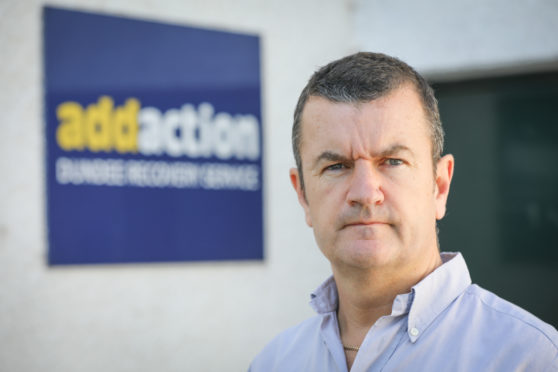A holistic approach is required to help free drug users “entrenched” in their addictions, the Sheriff sitting in Scotland’s only drugs court has said.
Sheriff Lindsay Wood, who graduated from Dundee University in 1977, presides over Glasgow Drug Court, which was set up in 2001 to reduce drug-related offending in the city.
A similar court in Fife ran from 2006 to 2013.
Sheriff Wood’s comments come on the day new statistics are expected to show Scotland has the highest rate of drug-related deaths in the developed world.
People appear before the drug court following a criminal conviction and are given additional support in a bid to stabilise their lifestyles and prevent re-offending.
Speaking to Dundee University alumni magazine The Bridge, Sheriff Wood said: “Most people I see have been in and out of jail all their life.
“They fund their drug habit by committing crimes. Drug addiction is not something you can take two weeks off from in the summer. It’s every day.”
Rather than being sent back to prison, offenders are placed on a Drug Treatment and Testing Order for 18 months.
This involves being allocated a drug addiction workers, a social worker and a nurse.
They are subjected to drug tests twice a week and heroin users are placed on the methadone programme.
Sheriff Wood said the approach is aimed at breaking the cycle of addiction and offending.
He said: “You have to realise the pressures drug addicts are under.
“Their dealers don’t want to lose them as a customer.
“They are entrenched in a lifestyle. Which is why everyone at the drug court is there to help them get better.”
But Sheriff Wood said it is also important to tell addicts the risks they are facing.
He said: “I tell them straight off that if they do not change , they will have a premature death.
“There’s always a tense hush in the court after that. But it’s true, and they need to know it.”
Offenders who complete the programme an official “graduation ceremony” takes place and they can tell the court about their success and thank those who have helped them.
Sheriff Wood said: “I reply on behalf of the court team.
“I then step down from the bench, give them their certificate and shake their hand.
“For some of these individuals, this has been their only tangible achievement in life.
“They’ve been more or less condemned all their days. It’s important we show that we’re proud of their progress and that the work they’ve done on the order has been exceptional.
“To go from being an entrenched drug addict, to abstaining from drugs and not offending is quite remarkable.”
Dave Barrie, service manager with Dundee drugs charity Addaction, said the drug court scheme should be extended.
He said: “The evidence is out there to support the effectiveness of drug courts.
“What you are talking about is offering a full package of support around the individual.
“Alternatives to prison are are really good thing.
“Drug courts were set up to be really different and individuals often develop closer relationships with the staff there.
“The evidence shows they work.”
A Scottish Government spokesperson said: “We believe the best way to reduce all forms of the harms caused by drugs is to take a public health approach.
“That means getting those who need it into appropriate treatment and support services at every point of the criminal justice system.
“As part of this approach, we are continuing to support the Glasgow Drug Court in its aims to reduce the level of drug-related offending behaviour in the city and to reduce or eliminate individuals’ dependence on, or propensity to use, drugs.
“Any decision on whether to establish a Drug Court within another judicial area would be for the Sheriff Principal of that area to make.”





